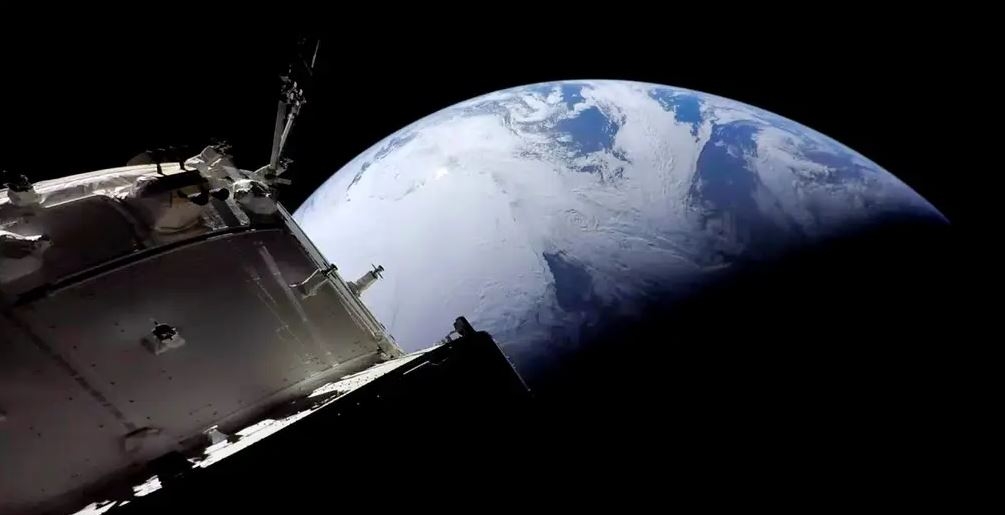On Sunday, the astronaut capsule that had been used during NASA’s Artemis I lunar trip to the moon splashed down into the Pacific Ocean while being supported by parachutes. This marked the successful completion of the mission.
The completion of the uncrewed test flight occurred at the same time as the commemoration of the 50th anniversary of the landing of Apollo 17 on the moon, which was the last occasion that NASA astronauts stepped on the surface of the moon.
After years of delays and an ever-increasing price tag, the new rocket and spaceship that will send people back to the moon functioned about as well as mission planners could have hoped for. The Artemis programme is the successor to the Apollo programme.
Mike Sarafin, the manager of the Artemis mission, said at a press conference held after the spacecraft splashed down that “this was a tough mission.” “And this is what a successful completion of the mission looks like.”
The mission to the moon closed off an incredible year of achievements for NASA. This summer, the agency’s James Webb Space Telescope, which was launched into space little under a year ago, started bringing back spectacular photos of the universe. Its DART mission demonstrated in September that intentionally crashing into an asteroid may shield Earth in the future from a potentially catastrophic space rock that is found to be on a collision path with our planet.
As Artemis I draws to a close, more focus will be directed on SpaceX, the private rocket business that Elon Musk established. In order to successfully land people on the moon, NASA is depending on a version of Starship, which is the company’s next-generation spaceship but has not yet been launched into orbit.
At around 12:15 p.m. Eastern Standard Time on Sunday, the Orion crew capsule re-entered the Earth’s atmosphere travelling at a speed of 24,500 kilometres per hour. This is the location where astronauts will sit on future space missions. The demonstration that the capsule’s heat shield could endure temperatures of up to 3,273 degrees Celsius was the last major aim of the mission.
The capsule was intended to make a second entry into the atmosphere after first bouncing off the top layer of air. This technique, known as a skip-entry, allows for more accurate steering in the direction of the landing site and was accomplished for the very first time by a space capsule that was constructed specifically for people. Because the heat generated by the capsule’s entry into the atmosphere caused electrically charged gases that obstructed the radio signals, there were two instances in which there was a breakdown in communication, as was to be anticipated.
Before and after the blackouts, live footage from outside the viewport of the Orion spacecraft revealed stunning vistas of Earth becoming bigger and larger.
The spacecraft touched down in the Pacific Ocean around 12:40 p.m. Eastern Time, just off the coast of the Baja peninsula in Mexico. The rescue workers working onboard the USS Portland encountered gusty winds and rough seas with waves measuring between four and five feet in height.
The Orion spacecraft was extricated from the sea by rescue workers over the course of the next several hours. After that, it will make its way to the Kennedy Space Center in Florida, where it will undergo a comprehensive review.
Artemis is a project that seeks to put people on the moon near the moon’s south pole as early as 2025. Key components of Artemis include the capsule and the Space Launch System, which is a massive new rocket.
During the course of Artemis I’s 26-day mission, hiccups occurred as was to be anticipated; nonetheless, the mission looked to be free of serious problems that would need a protracted investigation and extensive reengineering.
In an interview, the executive director of the American Institute of Aeronautics and Astronautics, Daniel L. Dumbacher, said that “it’s a terrific demonstration that this stuff works.” When Mr. Dumbacher was a senior officer in charge of human spaceflight at NASA more than ten years ago, he was in charge of supervising early development on the Space Launch System.
The flight gave some confirmation of the typical government-run strategy that NASA chose for the construction of the complicated space gear. Despite the fact that the mission was years behind time and billions of dollars over budget, the flight provided some validation of the approach.
It would seem that the space agency is currently in a strong position to carry out the next mission, which is scheduled to take place in 2024. During the mission, four astronauts will go to the moon but will not stop there; they will then return to Earth.
According to Vanessa Wyche, director of the Johnson Space Center, NASA expected to announce the members of the Artemis II crew somewhere in the beginning of the next year.
The Space Launch System and Orion will transport four humans into a wide looping orbit around the moon as part of the third Artemis mission, during which the lunar landing is scheduled to take place. This job will not call on any skills beyond those that were shown during Artemis I and Artemis II.
On the other hand, NASA will not have a ready option to turn to if SpaceX discovers that the technological obstacles are more onerous than planned. The organisation has only just received ideas for a second lander design from many different businesses, although the second lander design is planned to be used for subsequent moon missions.
The contract to supply the lander for Artemis IV was granted to SpaceX in November by NASA for an extra $1.15 billion.
